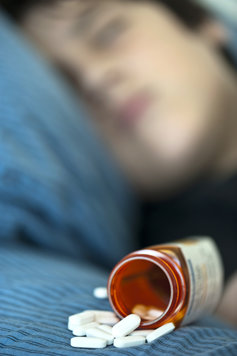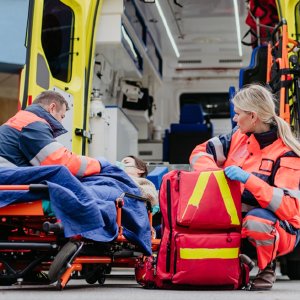Teen Overdoses at All-Time High, Parents Must Act

A recent study found that drug overdose deaths have more than doubled among teens, with 2020 and 2021 experiencing a notable spike in fatalities. While today’s generation of teens do not seek out drugs to the same extent that teens in the latter half of the 20th century did, overdose fatalities are significantly higher among teens today. That suggests drug use has become more dangerous for young people than it perhaps ever used to be.
A Look at the Data
It is no mystery that drug use is dangerous. But that fact does not always get through to people in a way that they can fully comprehend. To fully drive the point home of just how dangerous drugs are, it needs to be made clear to teens that drugs are considerably more life-threatening now than they probably ever were.
How do the experts know that drugs are more dangerous now than they used to be? Because while fewer teens are using drugs today than in previous decades, a much higher percentage of users (and a higher overall number of users) are overdosing and dying from drug use. According to research published in JAMA Network Open, fatal teen overdoses spiked in 2020, from 492 deaths in 2019 to 954 deaths in 2020, a 94% increase.
But the spike didn’t stop or even level off there. Fatal teen overdoses soared again in 2021, up 20% from 954 deaths in 2020 to about 1,145 deaths in 2021. And yet, while drug overdose deaths were more than doubling in just that two-year period, other data indicated that the use of drugs amongst teens dipped from 30% of teens reporting some drug use to just 18% reporting some drug use.
Even though drug use dropped by 12% among teens in a two-year period, drug overdose deaths spiked 114% in that same period, suggesting teens are at far greater risk.
What Is Causing the Spike in Deaths?

Much of what is causing the current spike in overdoses is that young people are taking drugs without knowing what is in them. NIDA Director Dr. Nora Volkow, who reviewed the research, shed light on the concerning trend amongst teens. In her words, “Teenagers don’t seek out illicit opioids, [but] they do seek out prescription opioids and that has always been one of their favorite drugs: Vicodin, OxyContin, hydrocodone. And they also seek out benzodiazepines.”
Further, because teens often unknowingly buy counterfeit versions of these drugs rather than the real thing, they put themselves at serious risk. Dr. Volkow went on to say, “It is estimated that at least one third of those illicitly manufactured pills are contaminated with fentanyl. In the past, you would just get sedated. Now you can take one benzodiazepine, one pill and it can kill you.”
“Teenagers don’t seek out illicit opioids, [but] they do seek out prescription opioids and that has always been one of their favorite drugs: Vicodin, OxyContin, hydrocodone. And they also seek out benzodiazepines.”
A Recent Example Paints a Clear Picture of Risk for Today’s Youth
The risk that young people face was made all too clear in a recent news story out of Florida that made national headlines. Earlier in 2022, a group of West Point cadets on spring break in South Florida overdosed on cocaine laced with fentanyl—a relatively new development, but it’s an extremely concerning indicator as to how no drug user is “safe” from the risk of consuming highly potent opioids when they think they’re consuming something else.
If there were any other crisis that suddenly began to kill over 1,000 young Americans every year, the nation would move mountains to address such an emergency. Now more than ever, parents, policymakers, public health officials, and political leaders need to work together to integrate community-level efforts to prevent young people from getting their hands on life-threatening substances.
In the South Florida news story, the community responded by mobilizing prevention and awareness campaigns within the urban area and surrounding suburbs. And while prevention efforts to educate and inform young people about the life-threatening risk of using any drug certainly have their benefits, sometimes prevention is not enough.
The Need for Treatment When Prevention Efforts Fail
It’s good news that fewer youths are experimenting with drugs. But those who do experiment are now at greater risk than perhaps ever before, especially if they become addicted and use drugs repeatedly. Addiction is a life or death affliction, a critical behavioral emergency that could result in the death of the addict if fast action is not taken to ensure that the individual gets help.
Young people need to know that experimenting with drugs is extremely dangerous. If they can be educated on the harms of drugs at a young age (before they ever have an experience with drugs), that is ideal. But if someone becomes hooked on drugs despite prevention efforts, that individual’s parents and loved ones must move fast to get them into a qualified drug rehab center.
Sources:
- NIDA. “Monitoring the Future 2021 Survey Results.” 2021. nida.nih.gov
- JAMA. “Trends in Drug Overdose Deaths Among US Adolescents, January 2010 to June 2021.” 2022. jamanetwork.com
- NPR. “Teen drug overdose deaths rose sharply in 2020, driven by fentanyl-laced pills.” 2022. npr.org
- US News. “Florida Groups Canvass Spring Breakers to Warn of Fentanyl.” 2022. usnews.com
Reviewed by Claire Pinelli, ICAADC, ICCS, LADC, RAS, MCAP, LCDC


 ®
®